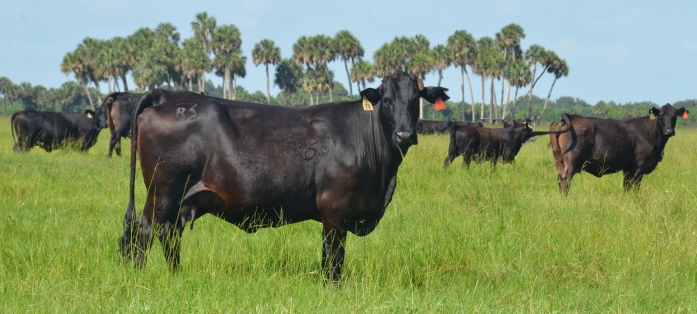Seminole Brand Beefs Up Florida

The Seminole Pride Beef brand puts the pride back in raising Florida cattle.
The Florida beef industry has received a bad reputation over the years as not having cattle that will meet the quality demands of today’s grid marketing system. But the Seminole Tribe of Florida, Inc. is aiming to change those perceptions through a branded beef program called Seminole Pride Beef.
Each year 800,000 head of cattle leave the Sunshine State and head west to feedlots where they often times lose their identity. Rather than being seen as Florida cattle these fed steers and heifers are just seen as any other commodity type beef.
Alex Johns, natural resource director for the Seminole Tribe, says that critics have said that the infrastructure is just not in Florida to feed cattle. "We’re trying to prove them wrong and at the same time we’re not growing a commodity product."
Seminole Pride Beef started in June of last year as a program to help market some of the calves that are born from the nearly 14,000 cows that tribal members own. The process of putting together the program took place over the past nine years.
"We launched it and it went over like hot cakes," Johns says. The tribe couldn’t meet the demand with just their own cattle, so it was opened up to local ranchers whose cattle met the quality specifications of Seminole Pride.
"We want this to be a Florida program," Johns adds.
He sees a branded beef initiative like this being a necessity for Florida cattlemen because of the prospect of being squeezed out of the state by environmental concerns. Florida’s tourism industry attracts people because of the sandy beaches and condominiums. Many of those travelers and residents think cattle have contaminated the water.
Seminole Pride Beef will help tell a different story to those potential consumers. For instance, the Seminole Tribe has been taking care of cattle since 1521 when the Conquistadors brought livestock over from Spain. That was the start of the beef industry in Florida that has now evolved into a state that has 25% of the country’s 2,500-plus cow-calf operations and 1.7 million head of cows when the dairy segment is included.
These Brangus-cross cows on the Seminole Tribe's Brighton Reservation are part of the 1.7 million cows that populate Florida.
"It is going to take all Florida cattle producers participating in this to get that story told," Johns relates.
Besides finding cow-calf producers to participate in Seminole Pride there also had to be a feeding operation within the state. A partnership was formed with Quincey Cattle Co. in Chiefland, Fla., where there were 3,000 head of cattle marketed last year. This year it looks like 8,000 head will be fed and for the following year owner Don Quincey is optimistic that he will be feeding 15,000 cattle.
A few years ago Quincey wouldn’t have dreamed of those kinds of numbers going through his former backgrounding operation. "I’d have said absolutely not."
In the past five years the landscape has changed drastically. Corn is now being produced in northern Florida on a rotation for peanut growers, which has helped reduced the cost of feed.
"We didn’t have a packer that would kill fat cattle in Florida," Quincey says. Central Beef Industries in Center Hill, Fla., specialized in processing cows for more than 50 years, but they saw an opportunity 1.5 years ago to move into fed cattle.
"Then all of a sudden our three-legged stool started to make a little more sense. We had our packer, we got local corn. The third leg of that stool is energy costs, which don’t seem to be going down," Quincey adds. To transport weaned calves from Florida to the High Plains feedlots of Kansas and Texas it costs anywhere from $60 to $80 per head.
A recent group of Seminole Tribe calves that were fed by Quincey gained 3.6 lbs./day. Steers graded 81% Choice or better, while the heifers went 83% Choice or better. The costs of gains were also comparable to a feedyard in Kansas.
The overall state of the cattle feeding industry won’t change because of a program like this but it can be a niche market that helps bring more income to producers.
"We are trying to utilize local businesses to bring a local product to the market place," Johns says. "We know that we produce a good product here. We’re just trying to showcase it."
This calf being backgrounded at the Brighton Reservation came from a local Florida ranch and will be eligible to participate in the Seminole Pride Beef program.









